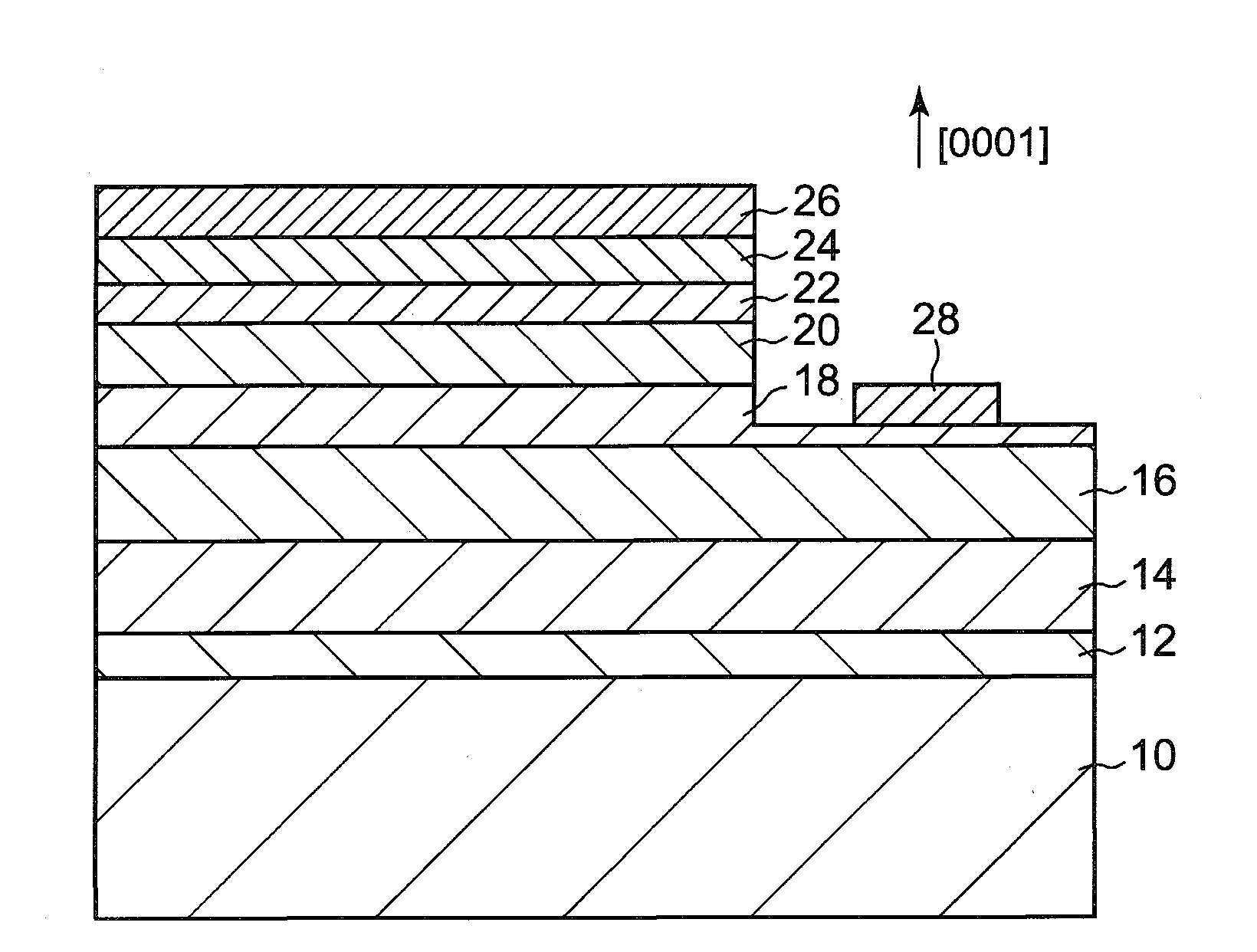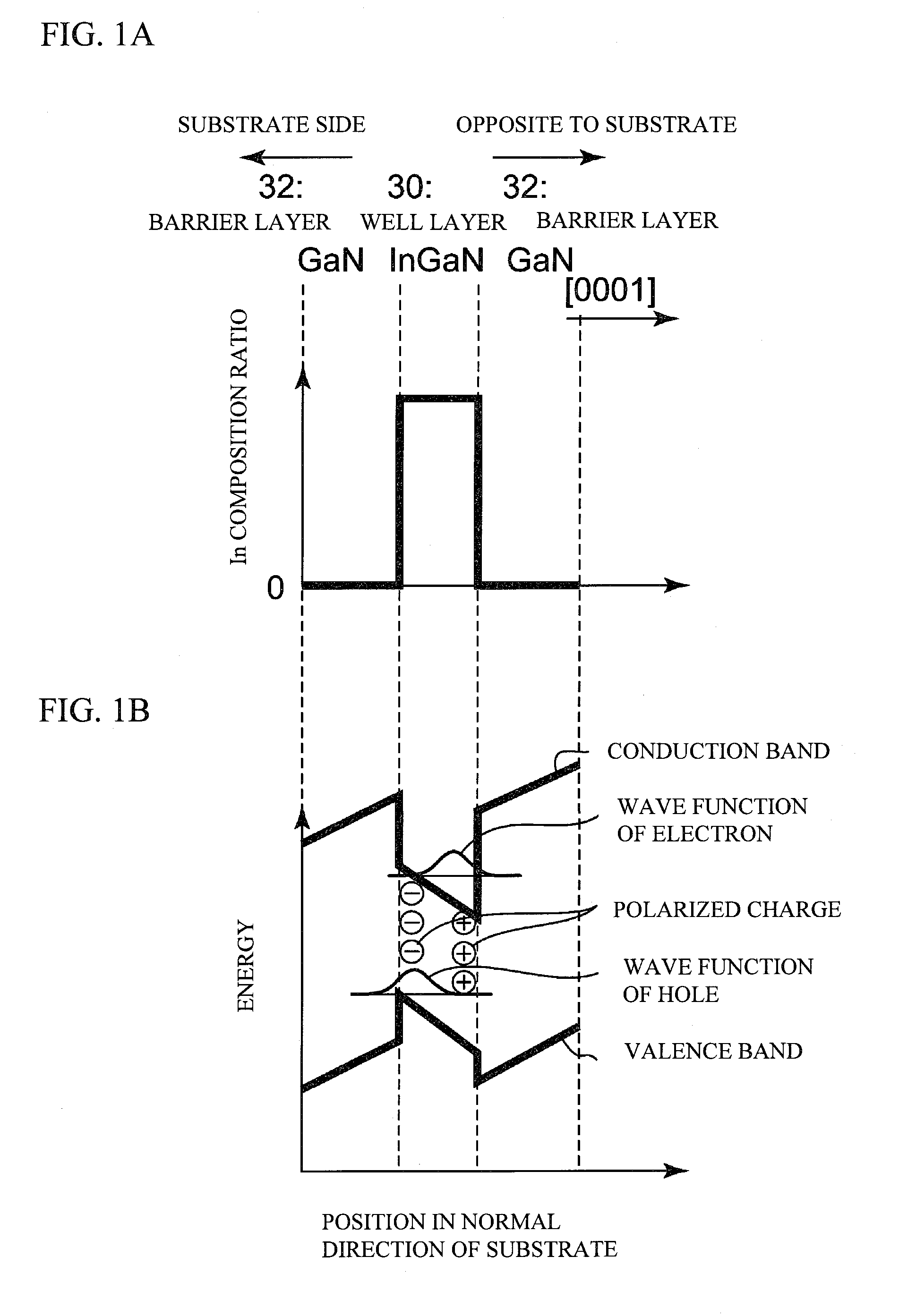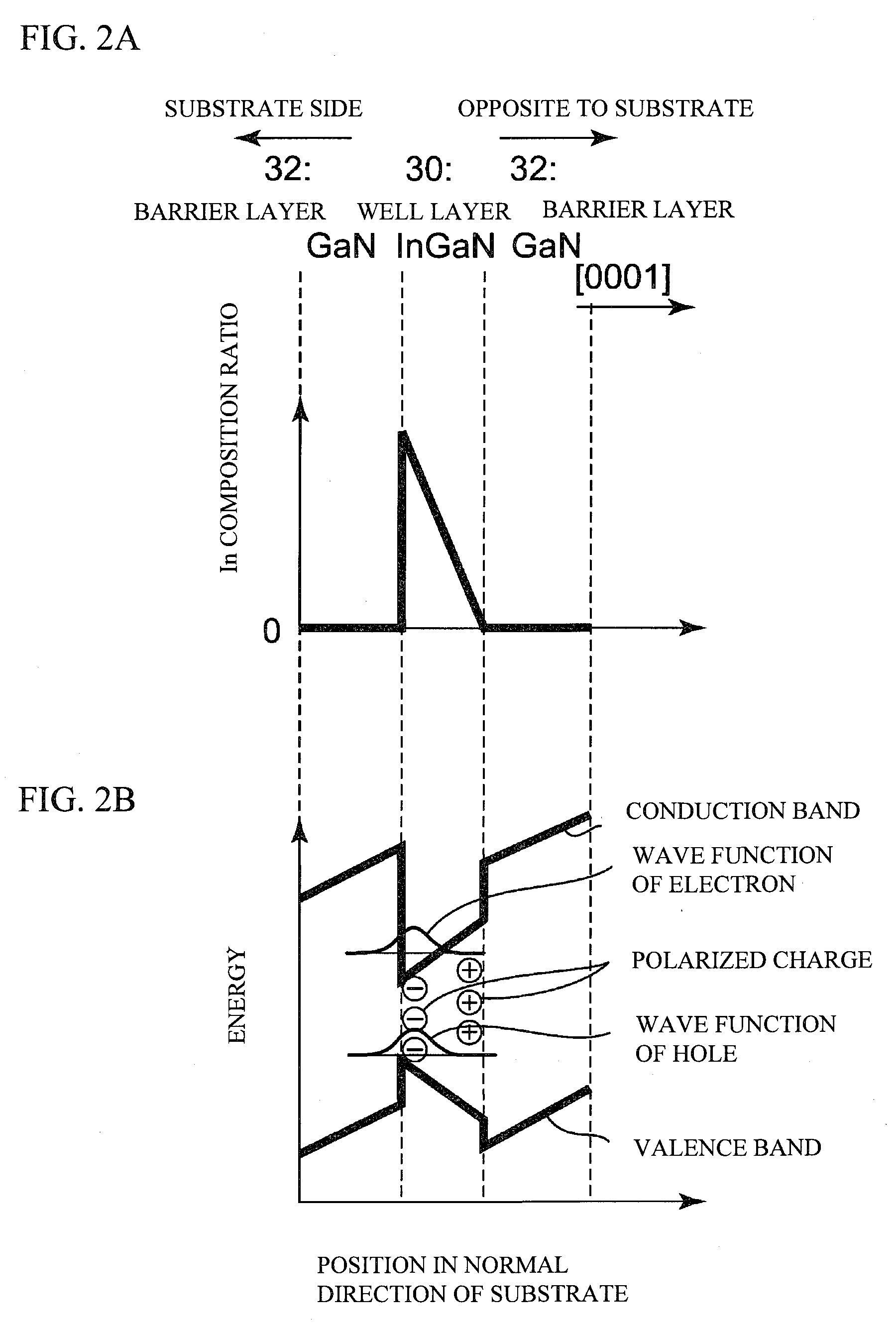Semiconductor light emitting device
a technology of light-emitting devices and semiconductors, which is applied in the direction of semiconductor devices, basic electric elements, electrical equipment, etc., can solve the problems of insufficient light-emitting efficiency, achieve the effects of reducing the positional separation between electrons and holes, improving light-emitting efficiency, and reducing the number of transistors
- Summary
- Abstract
- Description
- Claims
- Application Information
AI Technical Summary
Benefits of technology
Problems solved by technology
Method used
Image
Examples
first embodiment
[0026]FIG. 4 illustrates a cross section view of a LED in accordance with a first embodiment. As shown in FIG. 4, there are laminated an AlN buffer layer 12, a GaN buffer layer 14, an N-type first GaN cladding layer 16, an N-type InGaN contact layer 18, an N-type second GaN cladding layer 20 (corresponding to a first conductivity type semiconductor layer), a MQW active layer 22 and a P-type GaN cladding layer 24 (corresponding to a second conductivity type semiconductor layer) on a sapphire substrate 10 in order, with MOCVD method. Each layer is formed so that a normal line direction of the substrate 10 is [0001]. A P electrode 26 is formed on the P-type GaN cladding layer 24. An N electrode 28 is formed on the N-type InGaN contact layer 18.
[0027]A growth condition of each layer is given below.
[0028]The AlN buffer layer 12 at high temperature: thickness was 0.1 μm; undoped; growth temperature was 1230 degrees C.; and carrier gas was hydrogen.
[0029]The GaN buffer layer 14: thickness ...
second embodiment
[0050]FIG. 9 illustrates a case where the contact layer is not used. As shown in FIG. 9, a semiconductor light emitting device in accordance with a second embodiment has a Si-doped N-type GaN cladding layer 16a (corresponding to the first conductivity type semiconductor layer) having thickness of 2 μm instead of the N-type first GaN cladding layer 16, the N-type InGaN contact layer 18 and the N-type second GaN cladding layer 20, being different from FIG. 5 of the first embodiment. The N electrode 28 is electrically connected to the N-type GaN cladding layer 16a. The other structure is the same as that of the first embodiment shown in FIG. 5.
[0051]The AlN buffer layer 12 grown at high temperature has crystal quality and the a-axis lattice constant of the GaN layer grown on the AlN buffer layer 12 is reduced because of the AlN buffer layer 12, in a case where the high-temperature AlN buffer layer 12 is used as in the case of the first embodiment and the second embodiment. Therefore, i...
third embodiment
[0053]A third embodiment shows a case where a low-temperature GaN buffer layer is used. As shown in FIG. 10, a low-temperature GaN buffer layer 12a is used instead of the high-temperature AlN buffer layer 12 of the first embodiment shown in FIG. 5. The growth condition of the low-temperature GaN buffer layer 12a is shown below.
[0054]The low-temperature GaN buffer layer 12a: thickness is 0.1 μm; undoped; growth temperature is 600 degrees C.; and carrier gas is hydrogen.
[0055]A Si-doped N-type GaN cladding layer 16b (corresponding to the first conductivity type semiconductor layer) having thickness of 5 μm is used instead of the GaN buffer layer 14, the N-type first GaN cladding layer 16, the N-type InGaN contact layer 18 and the N-type second GaN cladding layer 20. The other structure is the same as that of FIG. 5 in the first embodiment. The low-temperature buffer layer may be used as in the case of the third embodiment.
PUM
 Login to View More
Login to View More Abstract
Description
Claims
Application Information
 Login to View More
Login to View More - R&D
- Intellectual Property
- Life Sciences
- Materials
- Tech Scout
- Unparalleled Data Quality
- Higher Quality Content
- 60% Fewer Hallucinations
Browse by: Latest US Patents, China's latest patents, Technical Efficacy Thesaurus, Application Domain, Technology Topic, Popular Technical Reports.
© 2025 PatSnap. All rights reserved.Legal|Privacy policy|Modern Slavery Act Transparency Statement|Sitemap|About US| Contact US: help@patsnap.com



